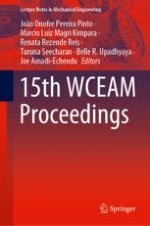This book gathers selected peer-reviewed papers from the 15th World Congress on Engineering Asset Management (WCEAM), which was hosted by The Federal University of Mato Grosso do Sul Campo Grande, Brazil, from 15–-18 August 2021
This book covers a wide range of topics in engineering asset management, including:
strategy and standards;sustainability and resiliency;servitisation and Industry 4.0 business models;asset information systems; andasset management decision-making.
The breadth and depth of these state-of-the-art, comprehensive proceedings make them an excellent resource for asset management practitioners, researchers, and academics, as well as undergraduate and postgraduate students.
